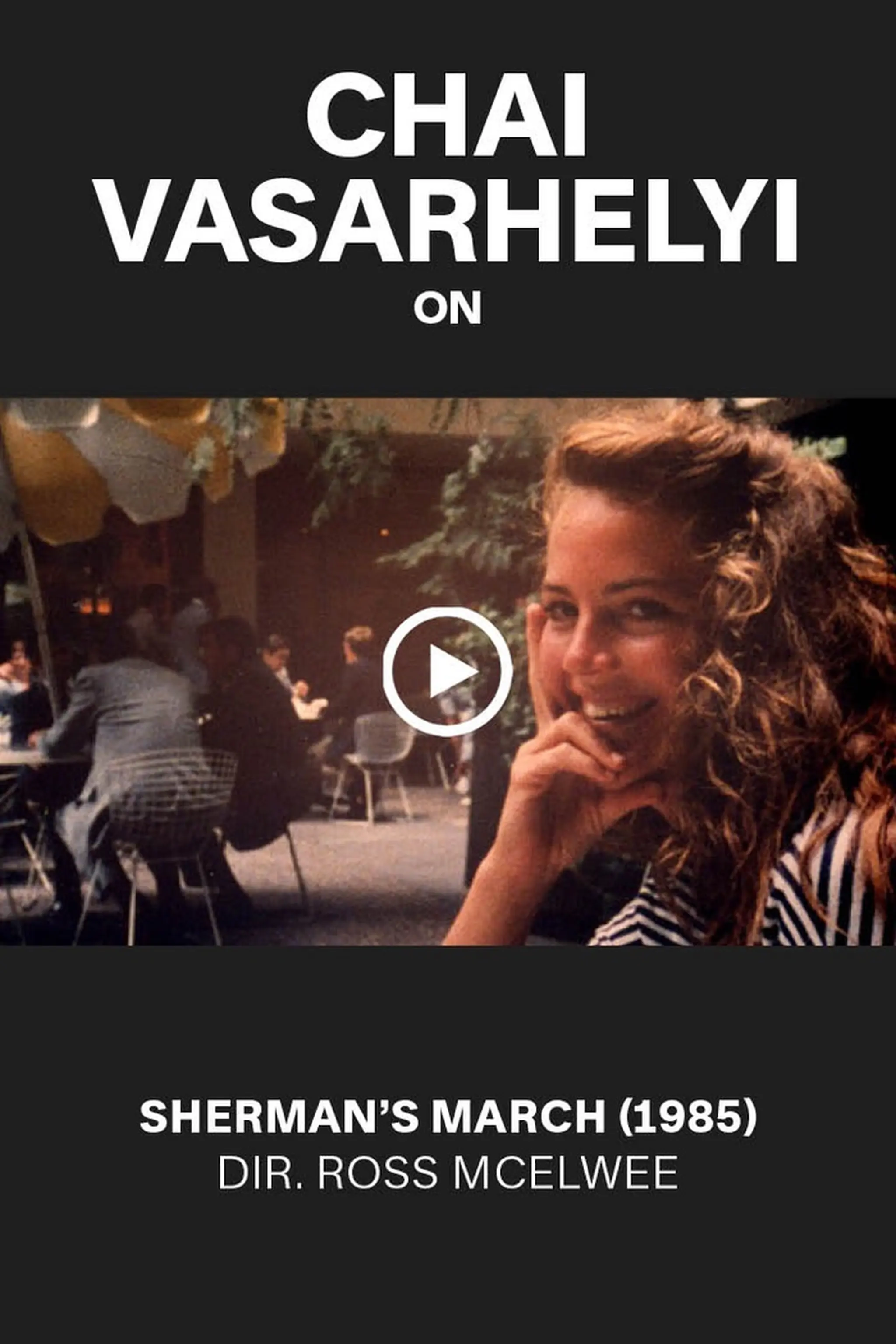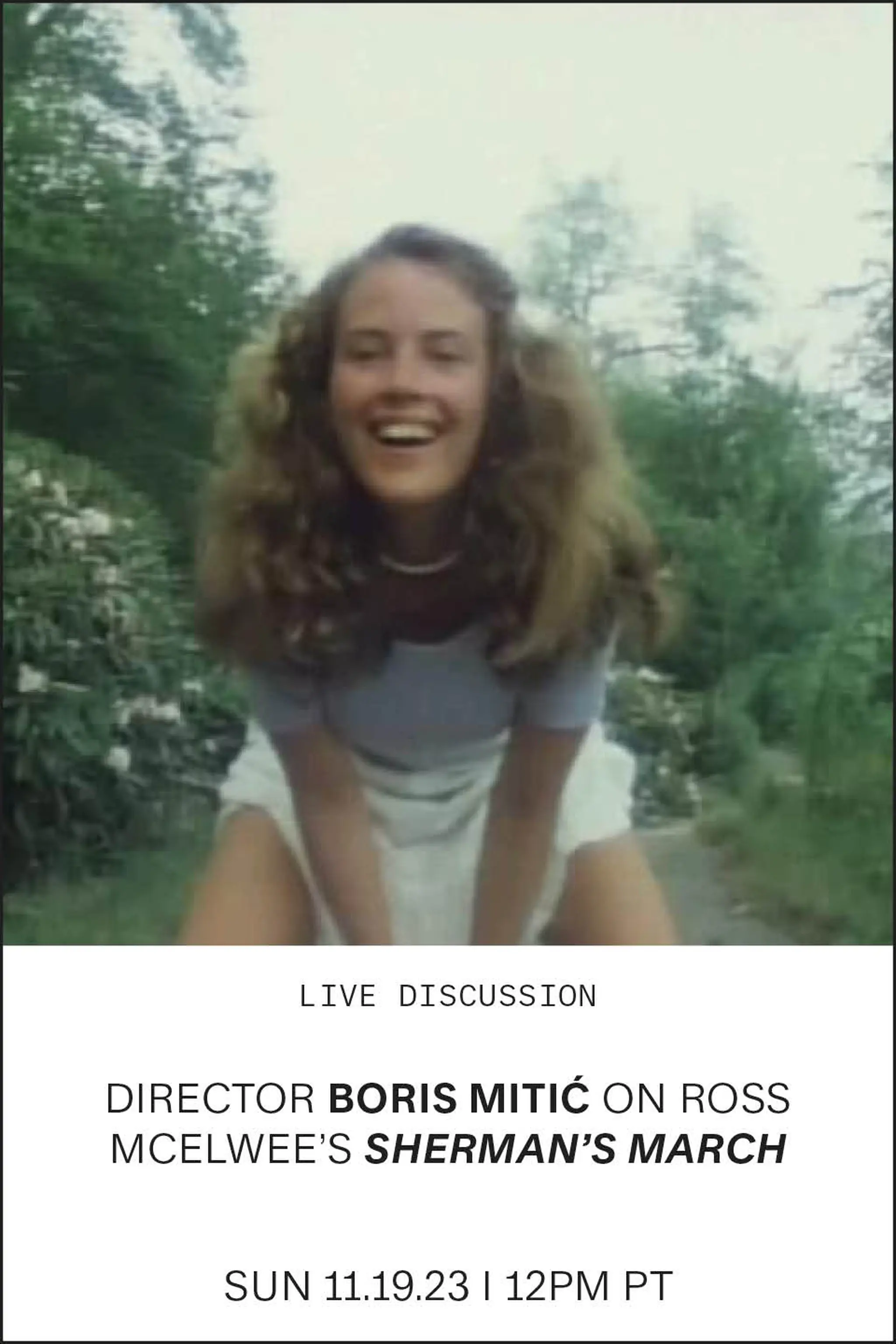Tug of War
By Katya Apekina
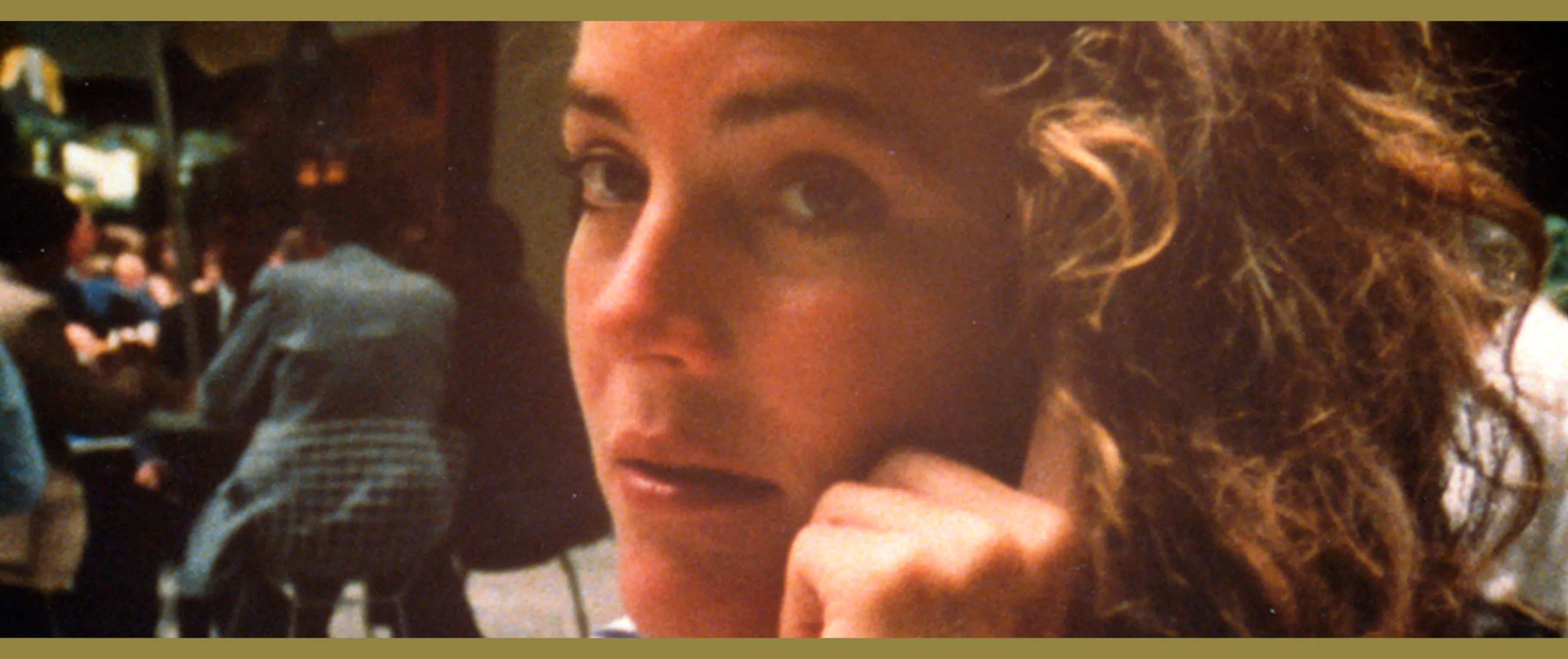
Sherman’s March, dir. Ross McElwee, 1985
Tug of War
Ross McElwee's landmark documentary of the mediated self asks how we proceed after annihilation
By Katya Apekina
November 13, 2023
The world has been ending for a long time. The apocalypse is not a modern concept—the word comes from ancient Greek. Maybe once we began to think of ourselves as individuals rather than parts of a whole, Old Testament ideas about achieving immortality through continuing a bloodline just don’t cut it. Knowing that my daughter will carry my genes, for example, won’t make me any less dead; if anything, dying and leaving her to fend for herself only seems more horrible. Maybe when we began to grapple with our individual mortality we confused it with the mortality of the group. How can the world go on without us in it? It’s unfathomable! Maybe we can’t tell the difference between our world’s ending and the World with a capital W.
.jpg)
From left: William Tecumseh Sherman; Ross McElwee
It’s hard to keep straight sometimes, our own individual experiences from the larger historical movements. In Ross McElwee’s brilliant personal documentary Sherman’s March: A Meditation on the Possibility of Romantic Love in the South During an Era of Nuclear Weapons Proliferation (1985), this tension between individual and collective undergirds the film’s anxiety. The world is ending, or maybe just his world.
When McElwee was a kid visiting Hawaii with his family, he stood on the beach and watched the hydrogen bomb test in the distance. He saw the white flash of a rocket, the sky going bright, then lime green, then red. Eventually the moon and stars started to come back against the redness. He grew up in the duck-and-cover age, when schoolchildren learned to hide under their desks in case the Soviet Union decided to drop a bomb on them. Countries were competing against one another to build bigger and deadlier atom bombs. Fallout shelters were advertised in real estate magazines. There was a sense that there was a button that could be pressed at any moment and a nuclear holocaust would follow. The anxiety around this was deep and widespread, and McElwee absorbed it.
In the film, McElwee has trouble sleeping. He has recurring dreams about nuclear war, but his anxiety about the state of the world, he says, is in direct proportion to his anxiety about his love life. When the movie begins, McElwee is reeling from a recent breakup. He leaves New York and returns home to North Carolina because he won a grant to make a film about the lingering effects of General Sherman’s march across the South, but the process of filming pulls him in a different direction.
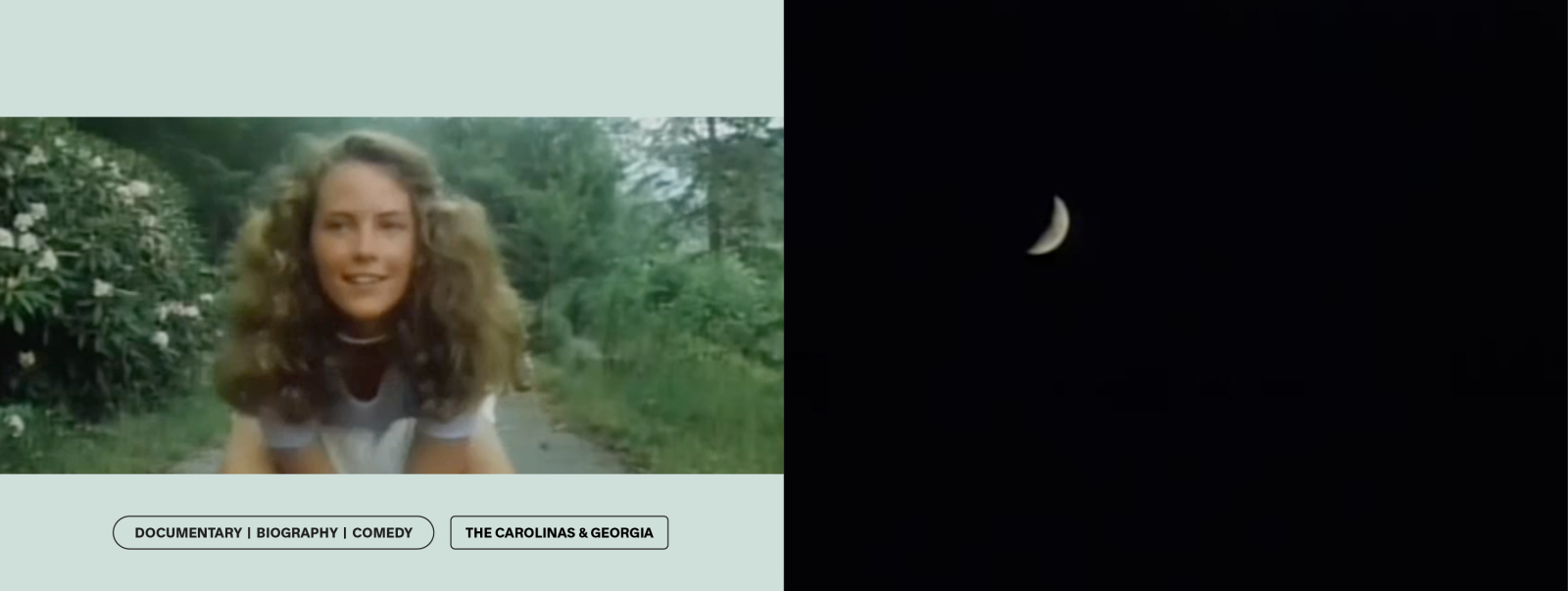
The moods of Sherman’s March
Sherman’s March was McElwee’s breakout film, winner of Best Documentary at the Sundance Film Festival in 1987 and preserved by the Library of Congress National Film Registry. He studied under cinema verité masters Ed Pincus and Richard Leacock at MIT and currently teaches filmmaking at Harvard. Though most of his adult life has been lived in the Northeast, McElwee’s films often bring him back to his Southern roots. In documentaries like Bright Leaves (2003), about his family’s connection to the tobacco industry, he weaves the deeply personal with larger cultural and historical movements, using essayistic voiceover and verité footage to interrogate himself and the world he came from.
In 1864, General Sherman laid waste to Georgia and the Carolinas, attacking the civilian population and destroying everything in his wake, leading to the South’s eventual surrender. The march took place about 120 years before this movie was made, but in the film it’s still very present for many people in McElwee’s life. His aunt kept a sofa in her attic, covered in holes punctured by the swords of Sherman’s soldiers, which she refused to let anybody mend. Before attending a costume party where some people are dressed in Confederate uniforms, McElwee films a woman with a helmet of blond hair who says: “I still don’t think we were wrong, only in that slavery should not be enforced…. You want to be a slave, be a slave! If you don’t, fine!” He lets that jaw-dropping sentiment sit without commentary.
Often you sense McElwee’s attitude behind the camera without his needing to say anything. When he films a shifty fire-and-brimstone preacher describing the end of the world, the camera’s attention falls on a girl eating an ice cream sandwich and someone in an Easter Bunny suit offering her candy, and the absurdity of the juxtaposition is very funny. McElwee is a one-man operation, doing both camera and sound himself, and so the camera begins to feel like an extension of his body. The film’s easy, first-person gaze, often framed in medium close-up, is so delightful because you feel how the pull of McElwee’s desires unglues him from the prescribed narrative. His lust and his curiosity about himself and the people around him lead him away from the dry historical premise and toward a different sort of documentary entirely.

“How can you proceed after an annihilation, be it a breakup or Sherman’s March?”
From left: the hills of North Carolina; McElwee alone in his twin bed
Early in the film, McElwee goes canoeing near his family’s home with his sister. She commiserates about his breakup and suggests that he be more “outgoing with [his] camera” and use it as a tool to pick up women. And he tries! A woman swims by their boat, an aspiring actress named Pat. “Perhaps I should return to my original plan to make a film about Sherman’s March,” he says, “but I can’t seem to stop filming Pat.” We see Pat roller-skating, doing cellulite exercises, trying to meet Burt Reynolds and making her mother cry with the chaotic disarray of her life. As Pat says, “you pay a price for being a female prophet.”
With the arrival of Pat, it feels like we’re seeing the creative spark take hold of McElwee and yank him by his necktie. He himself doesn’t know where things will go, who he’ll meet next and what she’ll be able to offer him and his narrative. For the viewer this feels very exciting, and you forget for a moment that you’re watching something carefully constructed, not something live. It feels like anything could happen. McElwee’s family seems baffled by his project, and he can’t yet articulate to them what it is he’s trying to do. Why is he filming all of this? How will it fit together? All he can do is follow an intuition.
At first it seems that his sister is right. His camera gives him access and connection; it gives his interactions heft. At one point his borrowed car breaks down and he takes it to the family mechanic. This is the sort of connection one has in a place they’re from—not close but long-standing. He offers his condolences to the mechanic, whose daughter had died. “How did she die?” McElwee asks him. And the mechanic looks at him with a pained smile and the most unguarded look in his eyes and says, “She had cancer.” We’ve learned to protect and armor ourselves from the world. It’s amazing when you come across a film where someone’s face looks so naked, their feelings and longings laid so bare. We learn in their interaction that McElwee’s mother had also died of cancer, an intimate wound, a detail he doesn’t share with any of the women he trails with his camera. This is what it’s like to be from a place, to be known.

From left: A cameo from the Easter Bunny; a monument to Union Army General William Tecumseh Sherman in New York City's Grand Army Plaza; the local mechanic pauses for an interview
After Pat packs her roller skates and leaves because she landed an audition for a part in a movie, McElwee moves on to other women. Most of them are also in limbo, leaving the South in one way or another. He tracks down an ex-girlfriend, Jackie, who has been active in protesting the nuclear-waste dumping that was happening in her hometown in South Carolina, catching her a few days before she moves to California. She’s burned out and can’t handle the weight of feeling responsible for a place. In California, she says, the problems won’t feel like hers to solve. The women in the film who do stay physically in the South find other ways to withdraw from society, whether by building underground bunkers or living on a deserted research island.
As the women accumulate, one after another, and McElwee either follows them and they leave or they reciprocate interest in him and he quickly jumps back onto Sherman’s route, a sense of futility begins to permeate the project. He’s gripped by “psychosexual despair.” The filming, rather than connecting him to people, becomes a barrier. At one point he visits a former teacher, who tries to set him up with yet another dubious match, and the teacher loses her patience. “This is not art, this is life!” she shouts, covering the lens of his camera with her hand. But McElwee has lost the ability to differentiate, and by the end of the film, he’s feeling the effects of this blurred boundary—what is reality and what is a performance? “It seems I’m filming my life in order to have a life to film, like some primitive organism that somehow nourishes itself by devouring itself. Growing as it diminishes.” This seems like a precursor to our lives in the 21st century, being constantly “connected” through social media, performatively documenting the minutiae of our lives but in the process ending up feeling more alienated and disconnected than ever before, our realities splintering further and further, our algorithm-reinforced worlds dividing us deeper and wider—politically, socially, physically. Disinformation, misinformation, the collective consciousness externalized in a dark cloud of 0s and 1s, our phones and watches buzzing constantly, marshaling our attention, eroding our sense of self and reality.
Sherman’s March trailer
After I saw this film as an undergraduate in a film class, I remembered none of the historical framing device—it had seemed like an arbitrary container for the film’s actual subject: love, anxious/avoidant attachment, and interesting women who instead of performing femininity did cellulite exercises, talked about linguistics and their mustaches and picked ticks off their legs. I didn’t understand, until rewatching the movie recently, that at its heart it was the story of a prodigal son returned home, unable to face or fully reckon with the horror of the region’s history—both in terms of the violence enacted on the Southerners by General Sherman, and in terms of the violence enacted on its people by the institution and aftermath of slavery. McElwee never says this directly. He never says: “I reject where I come from. I reject the South.” But he has chosen not to live there. He never says, “Part of me wants to burn it all down.” Instead, he seems to say, “I’m fascinated by this tragic historical figure who did burn it all down. Don’t I look like him? We both have red beards! We both have insomnia! We’re both plagued by a sense of failure!”
And the women he’s attracted to filming, rather than being the nice Southern girls of his family’s dreams, who would cause him to set down roots and stay, are prodigal daughters themselves. Everybody is buckling under the weight of history, their responsibility to their community, figuring out what they owe and how they can survive with a sense of themselves intact. How can you proceed after an annihilation, be it a breakup or Sherman’s March?
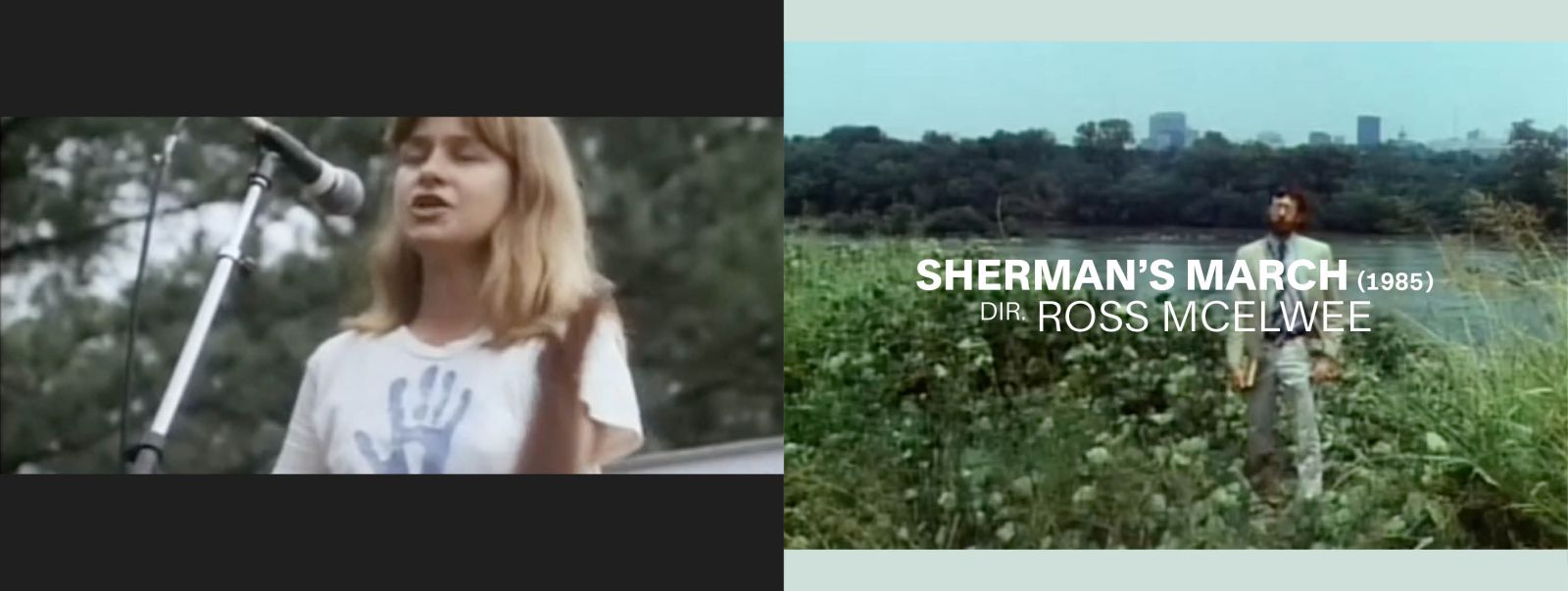
From left: Jackie at the protest; McElwee tracing Sherman’s footsteps


